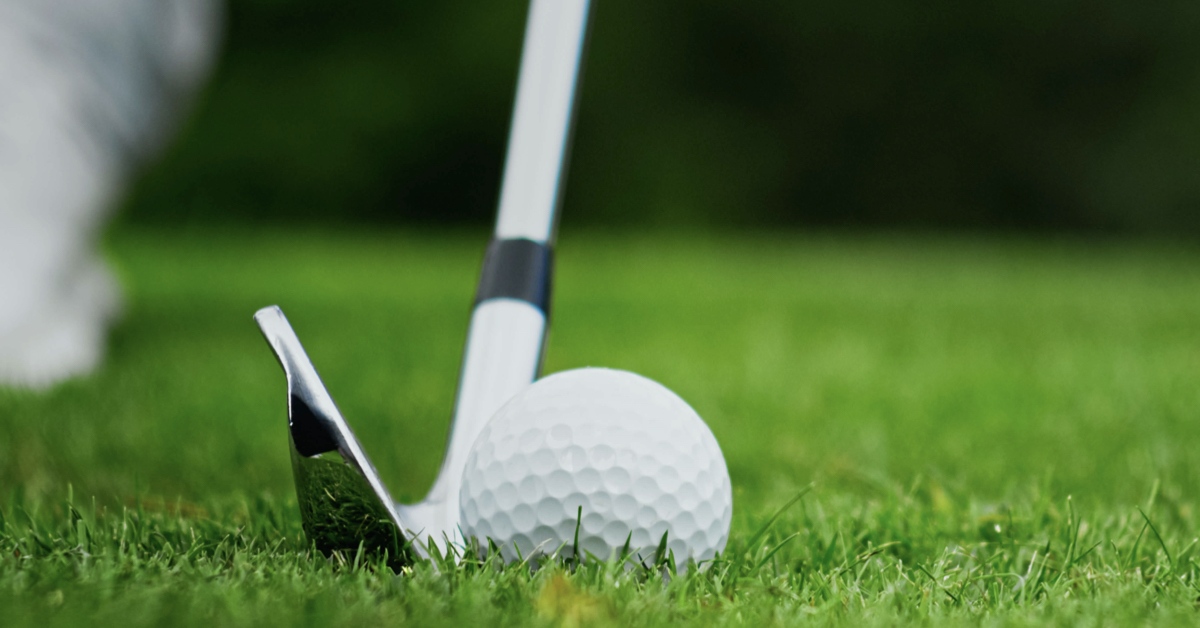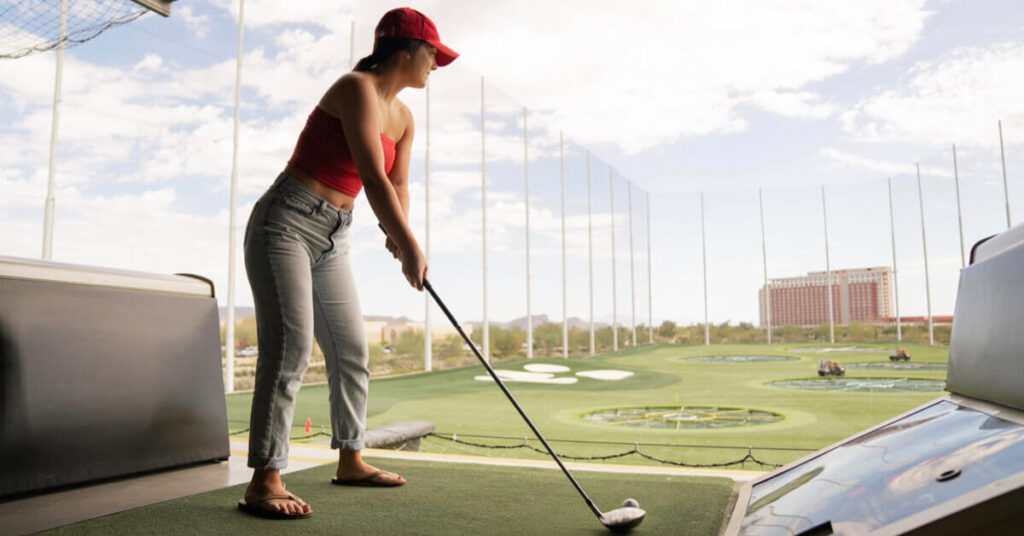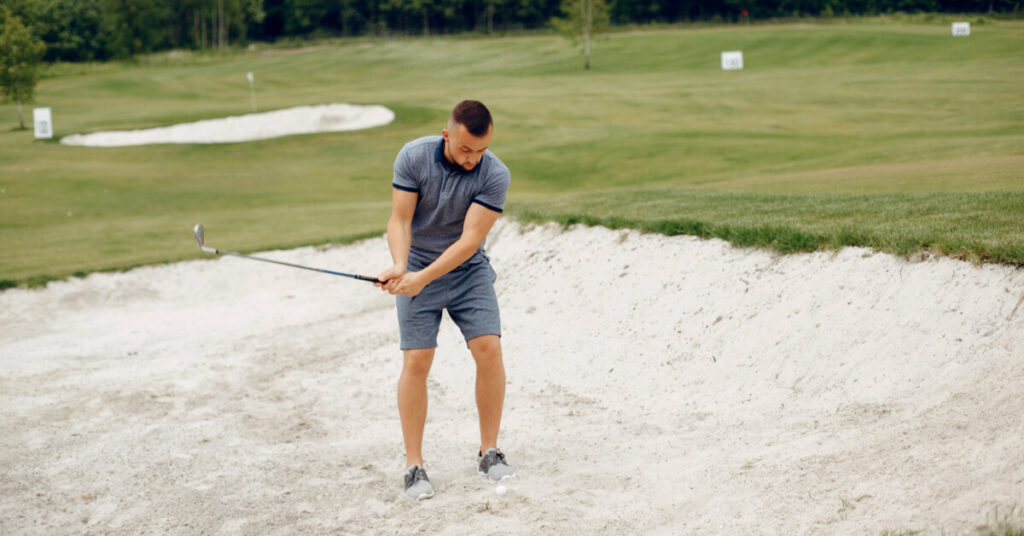How To Hit The Golf Ball – Six Tips For Better Shots

The fundamentals of golf are pretty simple. You have to hit a ball into a hole. Sounds like it should be simple… but anyone who has ever played will tell you, it’s not!
No matter how many times you play, there is always room to improve.
In this blog I review the basics of how to hit a golf ball for a great swing. Read on to learn some simple tips you can use to improve your game.
#1. Solid Stance
In golf, stance refers to the position of your feet & legs as you prepare to hit the ball. Getting the right stance will provide a solid foundation for your entire swing, from the backswing to the follow through. If you don’t get this right, it’s likely to negatively impact your game.
So, what does a good golf stance look like?
Full swing stance: Start with both your inner ankles under each armpit & parallel to your target line.
Chipping: When you are chipping close to the hole, narrow your stance a little more. So your feet are less than shoulder width apart.
The foot that’s closest to the target is called your lead foot, this should point towards the target slightly. This position will allow for increased hip rotation. The foot that’s furthest from the target (your trail foot) will be perpendicular to the line you are following as you make your swing.
#2. Perfect Posture
Once you’ve got the right stance, check your posture and make sure you are comfortable. Bend your knees slightly and put most of the weight on the balls of your feet. Holding the club in front of you, you’ll hinge at the hips until your club meets the ground. Keep your spine at a diagonal angle so your shoulders and hips can turn easily on your backswing.
If you’re new to golf, this can take a bit of getting used to. A common mistake for beginners is keeping their spine straight which often results in having to bend too much in the knees. This can become uncomfortable quickly. Tilting your body allows the movement to come from the shoulders & hips, as opposed to the legs.
Keep practising until you get the right angle & perfect your posture each time you play.
#3. A Great Grip
The way you grip your club is a key factor in how you hit the ball. It should be neither too tight nor too loose. A neutral grip is how most golfers start, where you place your lead hand towards the top of the club. Aim to place your palm about half an inch from the butt of the club. When you grip the club, the angle of your hand should run diagonally across your fingers then place your trail hand over your lead hand. Position your hands in such a way that the palm of your trail hand nestles over your left thumb, your thumb & index finger pointing in a v shape.
Once you’ve taken your stance, grip, and are set in your posture, you’re ready to address the ball by placing the clubhead on the ground.
#4. Balancing Your Backswing
The Takeaway:
Your backswing starts with a takeaway. This is what sets you up for a great (or not so great) swing. Using your shoulders & both arms moving as one, lift the club back around 12-18 inches from the ball. Keep your lead arm straight , allowing the hands and wrists to hinge naturally (they will take care of themselves to support the weight of the clubhead).
The Backswing:
Continuing the backwards motion, avoid the inclination to bend your lead arm as your body reaches further back. Bend your lead knee and turn your hips slightly so the weight shifts to your trail foot. If you try to keep your head in line with the rest of your body, this can be helpful.
#5. Shifting Down Well!
Once you reach the height of your backswing, the fastest part of your swing is the downswing. The speed of your downswing determines how fast (and far) your ball will go. Shifting your weight back to your lead foot, you’ll turn your hips towards the target and your arms & shoulders will follow.
To hit better shots, you need to strike the ball in the sweet spot; just above the centre of the clubface. To aid with this, you can try drawing a small circle on your ball with an erasable marker. Striking the sweet spot can produce that crisp, well-played shot that leads to a birdie—and a memorable round.
#6. Following Through
After you’ve hit the ball, you’ll want to follow through correctly. At the end of your swing, your hips will be facing the target & you’ll end your shot by swinging your club all the way up & over your lead shoulder. Your weight goes to your lead foot & only the tip of your trail foot touches the ground. From this position you can watch your ball fly up into the air & (hopefully) land close to your target.
With consistent practice & a desire to improve, applying these 6 tips will help you hit better shots & improve your game. If you’re keen to learn more about how professional golf lessons could help you, please get in touch or book a lesson with me. Happy golfing!


